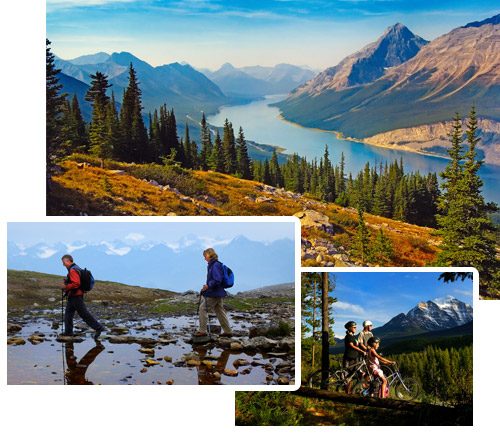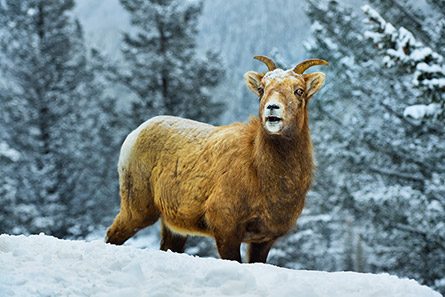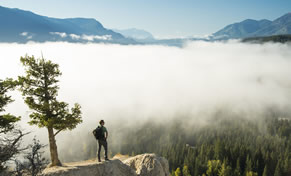ROCKY MOUNTAINS
Federal ecozones: Montane Cordillera
Area: 262,150 km2
Natural cover: 257,848 km2
Per cent natural: 98%
Protected area: 62,697 km2
Per cent protected: 24%
Number of NCC projects (all): 178
Number of species of birds: 289
Number of species of trees: 61
Number of species of mammals: 89
Number of species of amphibians: 14
Estimated human population: 300,619

Description
The Rocky Mountains mark the Continental Divide in Canada, between the Pacific Ocean and Atlantic/Arctic Ocean watersheds. This region straddles the border between the interior of BC and the grasslands and boreal forests of Alberta. The Canadian Rockies are known around the world for their majestic high peaks, rugged scenery, river valleys and mountain lakes. This region has a high diversity of habitats, ranging from open foothills grasslands to dense forests, to alpine meadows, to glacial-fed rivers.
Rocky Mountains Landscape

Conservation Values
Canada’s Rocky Mountains are an important linkage in a major continental wildlife corridor that extends from Yellowstone National Park in the U.S. to the Yukon (Y2Y). By maintaining and restoring wildlife linkages and protecting habitats, there is a unique opportunity to maintain large, healthy ecosystems and their wildlife.
The Rocky Mountains are well-known for their diversity and abundance of large mammals, including grizzly bear, cougar, wolverine, elk, mountain goat, mountain sheep and mountain caribou. In addition to large mammals, the region includes a very high diversity of birds and globally rare species, such as the Lake Louise arnica and Banff Springs snail.
Challenges/Threats
The local economies of the Rocky Mountains depend on both tourism and resources. Forestry, ranching and mining are common land uses outside of protected areas. There are increasing pressures on some regions for residential development, recreational properties and resorts, particularly in the valleylands. Development along river valleys has created several “pinch points” that impact connectivity for wildlife. The foothills of the Rocky Mountains in Alberta are under the highest threat from activities, such as rural residential development, industrial development, utility corridors and fire suppression.
The Rocky Mountains include several species that are being directly impacted by climate change, including whitebark pine and American pika. Climate change is also melting glaciers, which will cause significant changes to the flows of rivers in the Rocky Mountains and beyond.
What NCC is doing
NCC’s work in the Canadian Rockies aims to protect wildlife corridors and to enhance existing networks of protected areas on both the British Columbia and Alberta sides of the mountains.
NCC works in key areas in the Canadian Rockies, including:
- Bow
- Castle Crowsnest Watershed
- Elk Valley
- Flathead Valley
- Kootenays
- Rocky Mountain Trench
- South Selkirk Mountains
- Southern Foothills
- Waterton
Species at risk found on NCC projects in the Rocky Mountains include westslope cutthroat trout, grizzly bear and whitebark pine.

Did you know?
- Canada’s Rocky Mountains are one of the last places on Earth that have not lost any large mammals in recent history, though many populations are declining. This is because the region still maintains large, intact and connected habitat.
- The Rocky Mountains are the birthplace of Canada’s National Parks.
- Snow and ice in the mountains are the source of all the rivers that flow through Canada’s prairies.
- Canada’s Rocky Mountain parks have been designated as a UNESCO World Heritage Site.
- The Columbia Wetlands is a 15,070-hectare (37,240-acre) wetland in BC’s Columbia Valley region. It is designated a Wetland of International Significance.
Photo Credits (Top to bottom): All images by Kristian Bogner.


